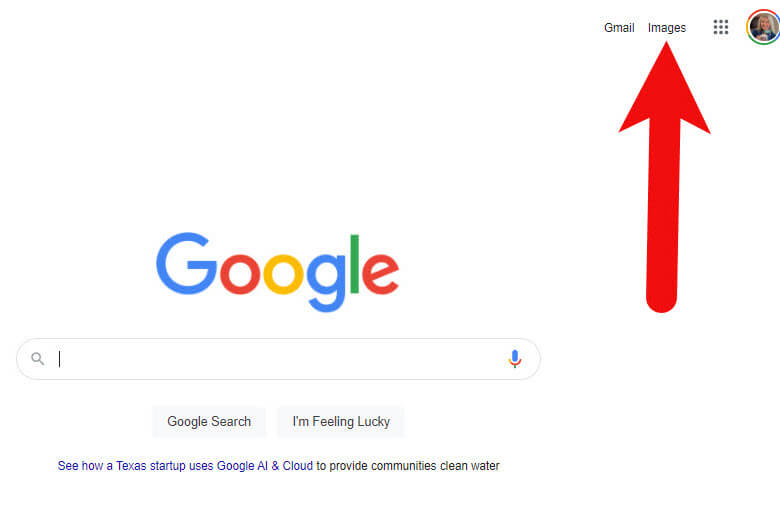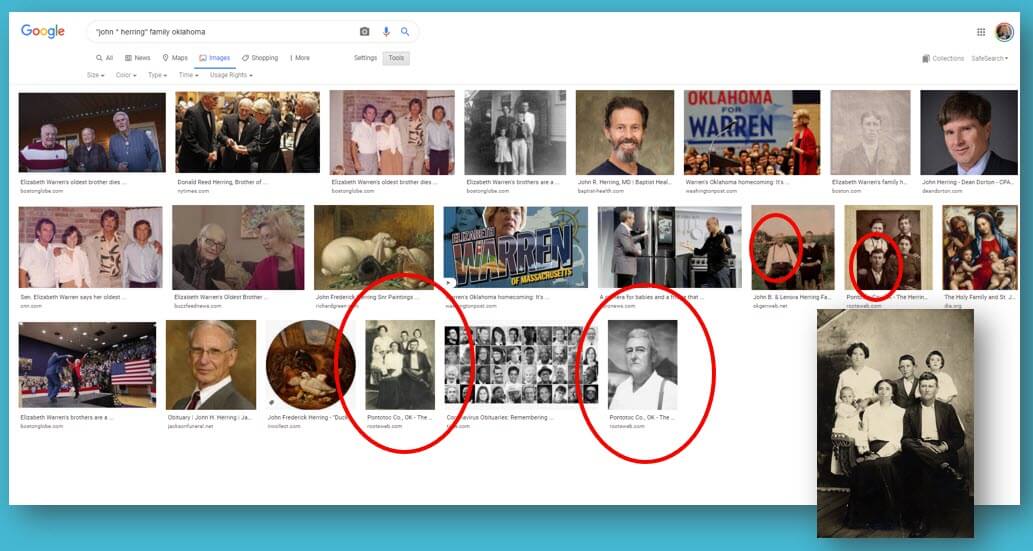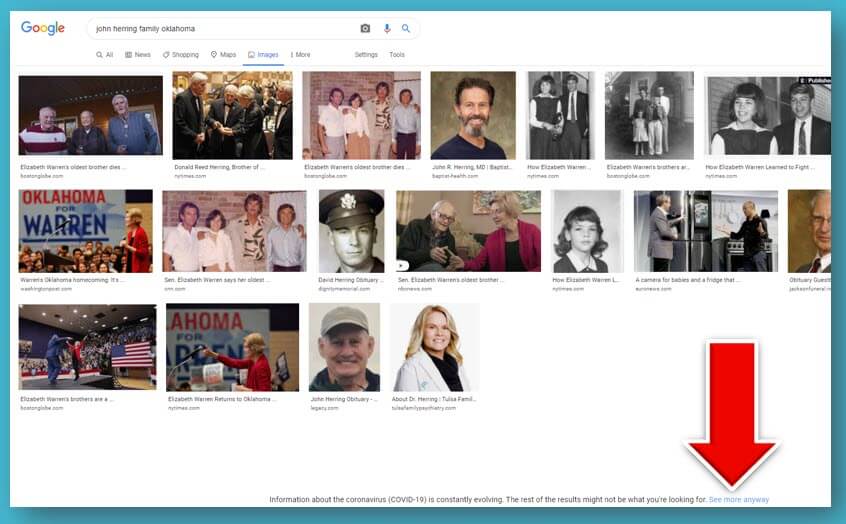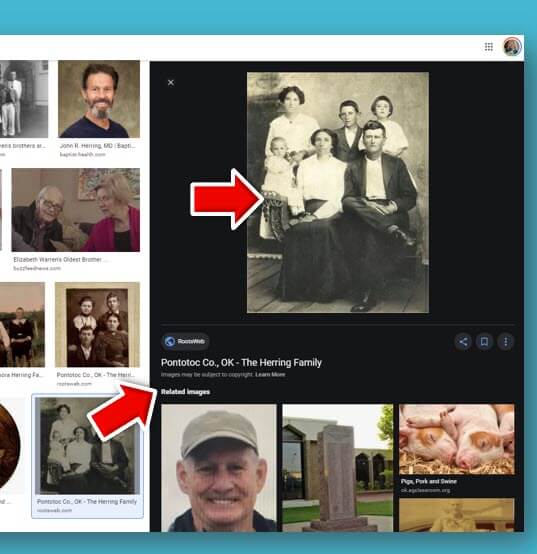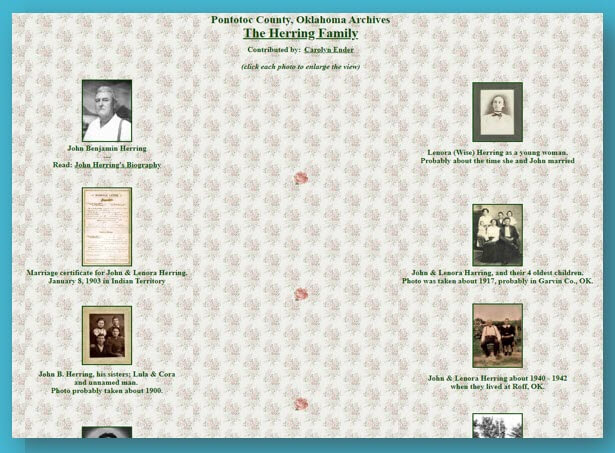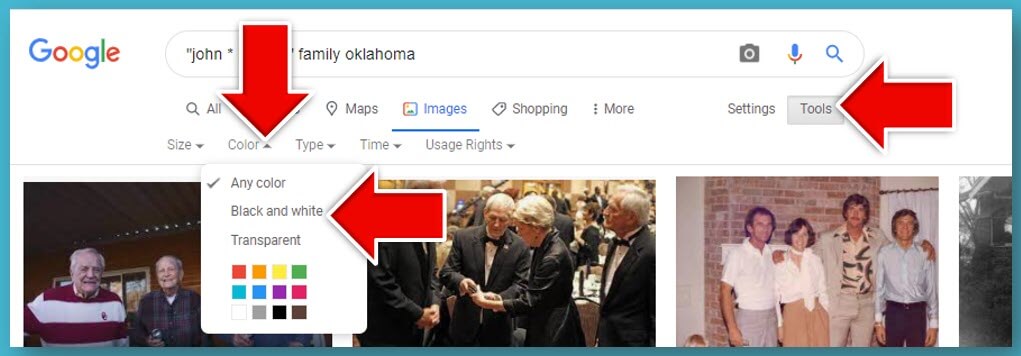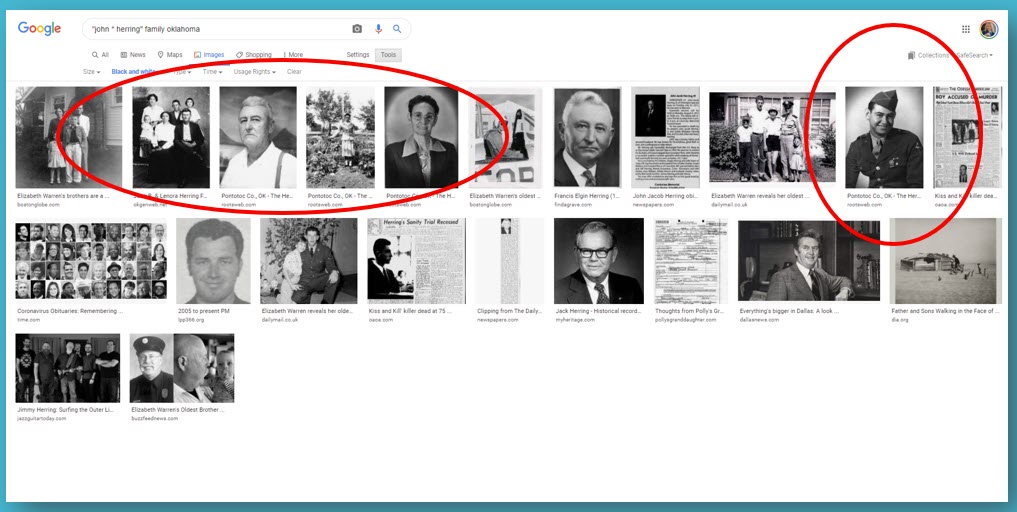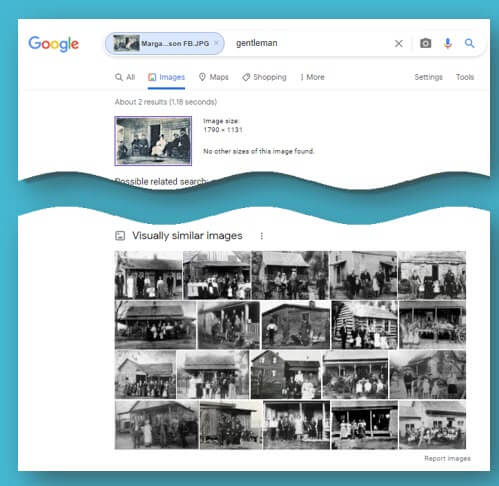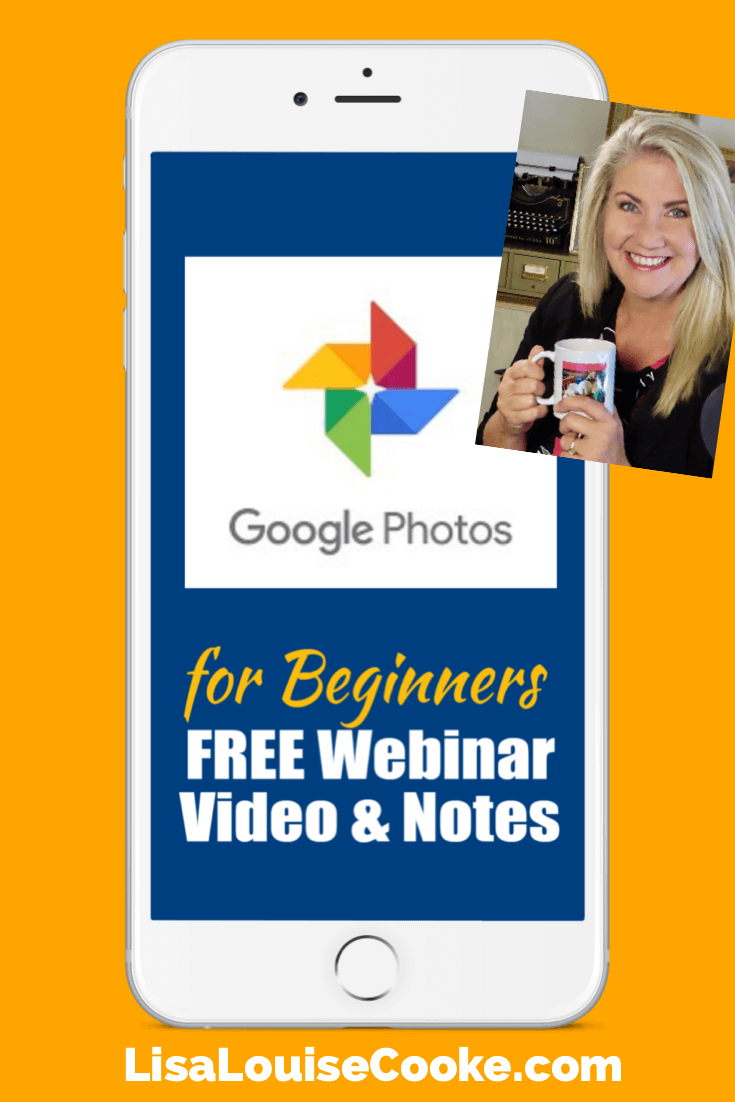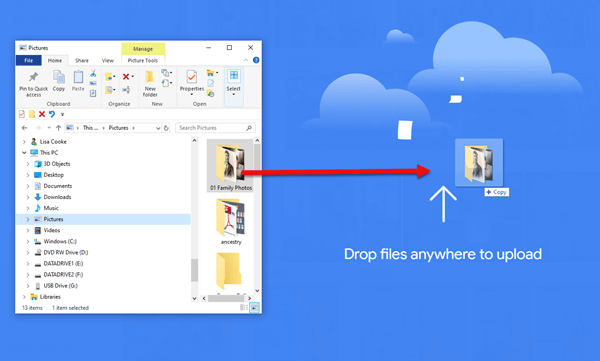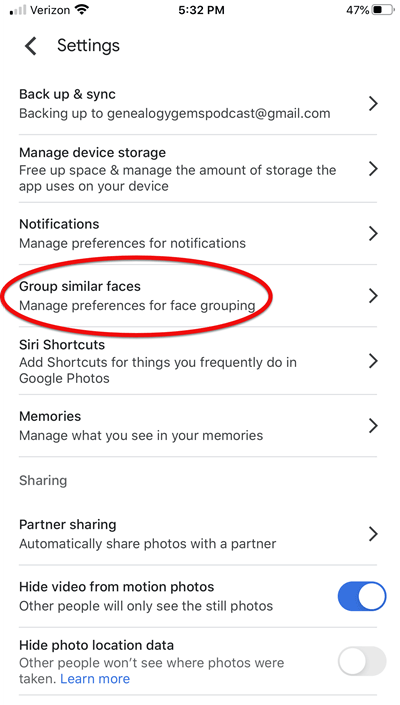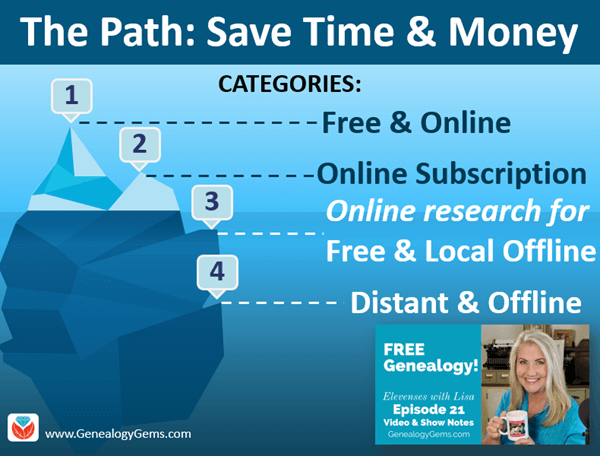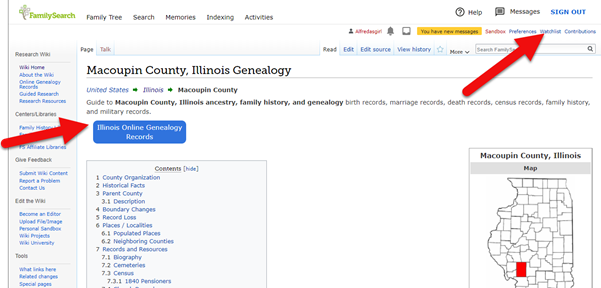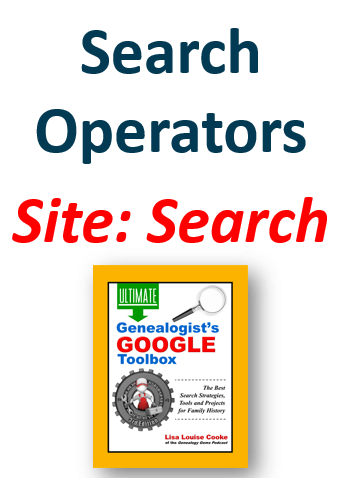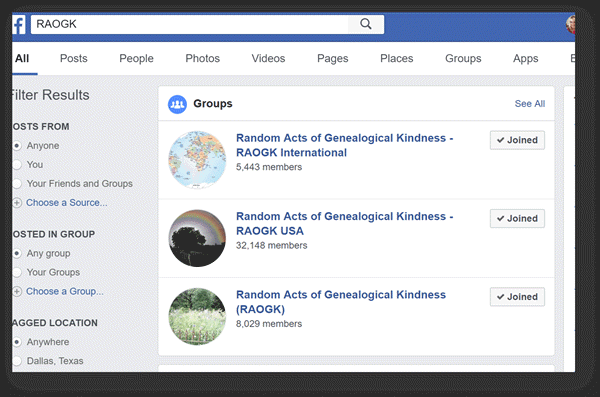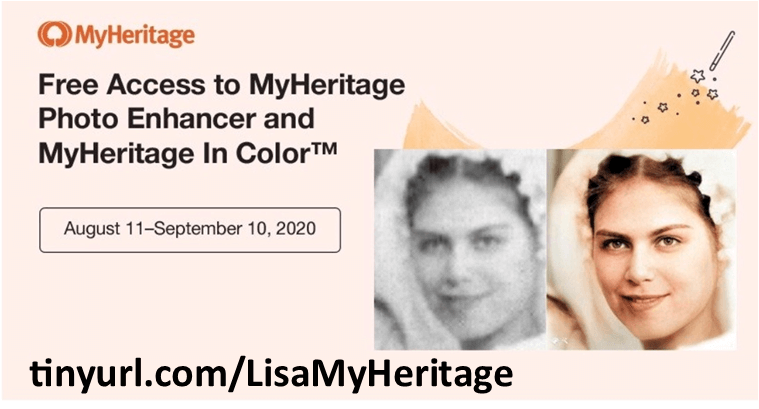Source Citations for Genealogy
Here at Genealogy Gems we believe that genealogy is FUN, and finding great sources of information is part of that fun. But citing those sources may not be so much! My guest in Elevenses with Lisa episode 60 is going to make the case why source citation is a vital part of great genealogy research and she’s going to give us the resources to help get the job done right.
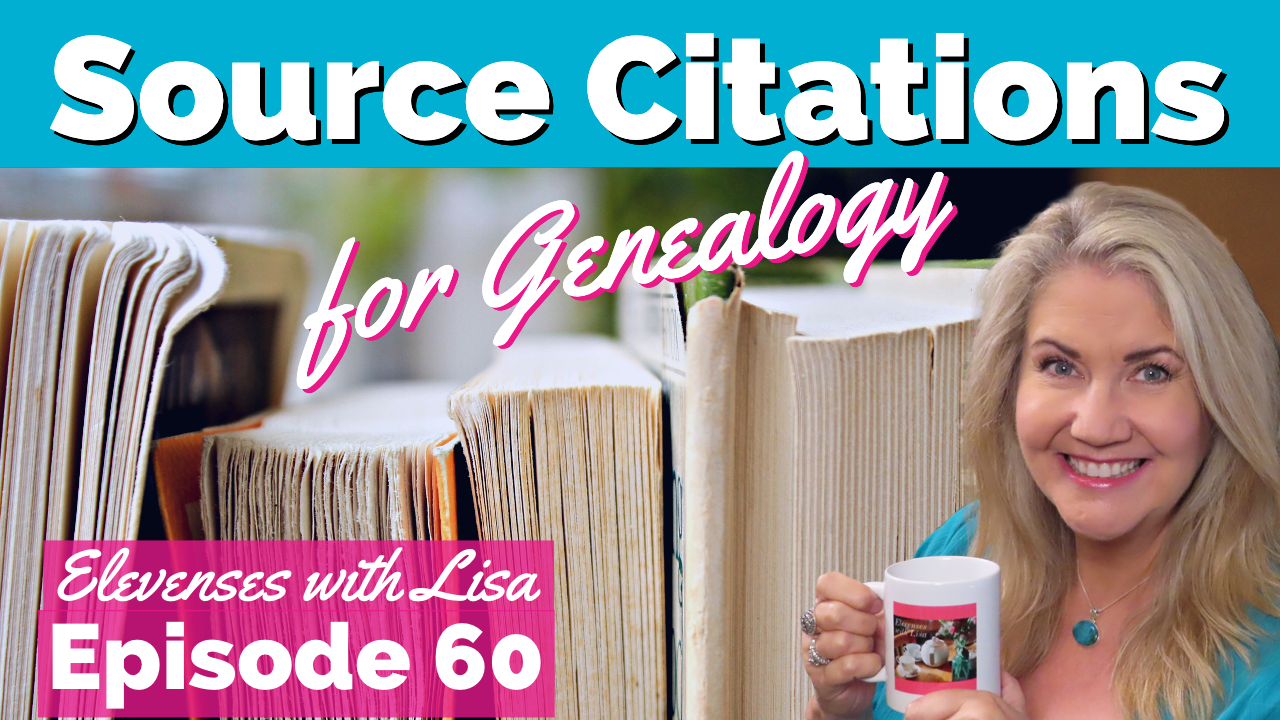
Elevenses with Lisa episode 60
Watch Elevenses with Lisa Episode 60:
Click these buttons to share this episode with your friends:
Add my YouTube channel to your “Favorites” list on YouTube:
Click here to add my channel to your YouTube favorites. Subscribing for free to the Genealogy Gems YouTube channel will make it super easy to return to my channel and Elevenses with Lisa any time you’re on YouTube. Thanks!
Download the Elevenses with Lisa Genealogy Source Citation Cheat Sheet
Premium Members can download the BONUS 2 page Genealogy Source Citation Quick Reference Guidebased on today’s episode. (Not a member yet? Click here to learn more and join today. Premium members can find the full length 18 page show notes PDF in the Resources section at the bottom of this page.
Episode 60 Show Notes
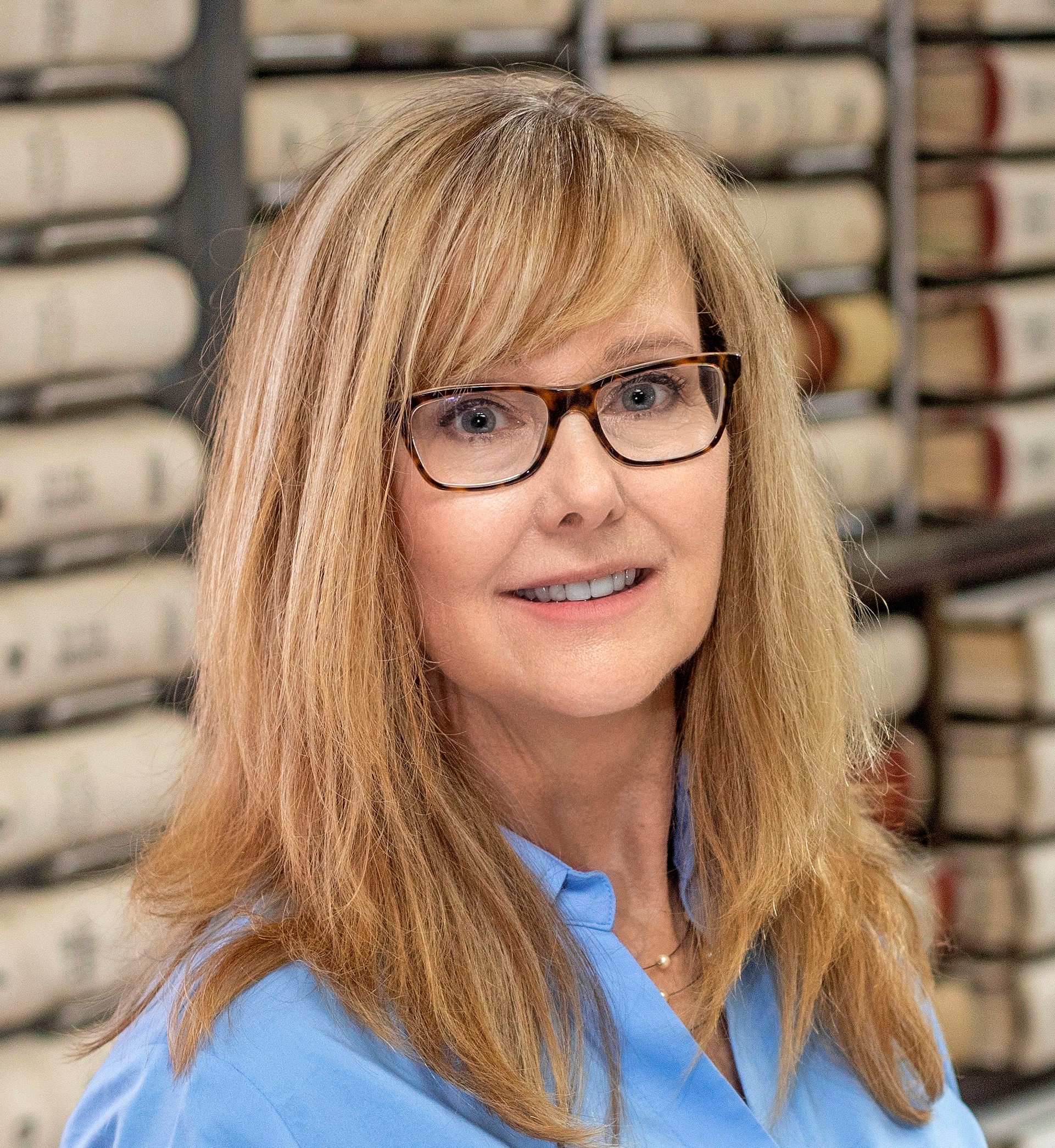
My special guest: Gail Blankenau
Lisa: Genealogy is FUN, and finding great sources of information is part of that fun. But citing those sources may not be so much! My guest in Elevenses with Lisa episode 60 is going to make the case why source citation is a vital part of great genealogy research and she’s going to give us the resources to help get the job done right. Gail Schaefer Blankenau is a history and genealogy research expert, author and speaker. She specializes in German genealogy, reading old German script in Midwestern and Nebraska roots, land records, as well as lineage research.
The Pain of Citing Sources for Genealogy
(01:31) Connie from Port Orchard, Washington wrote in recently to say, “I started researching my family about four years ago and your podcasts are very helpful. Thank you. Like many people, I started with the census where I discovered that a great great grandfather had fought in the Civil War. So, from then on, I was hooked. The reason I’m writing is to ask if you would consider doing an Elevenses episode on source citations. I wanted to do the right thing. So, I started researching for how to cite the digital newspaper articles I’d found. I was quickly bogged down in a quagmire of styles, punctuation, and metallics. That’s all well and good for academia. But I’m not writing a thesis. Thankfully, I have Rootsmagic to handle most of that. However, I still have problems when I want to cite my sources. Anywhere else like online trees, I stare at their form for a while wondering what to put there. And then I usually give up, I know I’m making it harder than it is. But I have an irrational fear that if I do something wrong, Elizabeth Shown Mills is going to find out and scold me. (Editor’s note: She won’t. She’s very, very nice!) You’ve done such a wonderful job of taking the mystery out of so many things. So please consider helping us conquer our fears, of citations.” Gail, I know that you’re the person who can help us with this. Do you hear this quite often from other genealogists?
Gail: I do. And I actually share her pain because even though I’m a published author in several genealogical journals, as well as genealogical magazines, I don’t always cite the way the editor wants. I just did a master’s thesis in history and I had to change some of my citing, and I was using genealogy citations. So, she’s right, there is a mix of citation styles. It sounds like she’s doing a good job at the main thing, which is to do good research. But when you want to share your research, people have to be able to check it. I have some ideas for her to maybe consider that we can talk in a little bit more depth today.
Lisa: Excellent. And I like your title, The Good, the Bad and the Ugly
Gail: And I’ve seen it all. I kind of call it the wild, wild west of citation of evidence because we have different citation styles. We as genealogists really enjoy the detective work. I mean, I love detective stories! And I like to solve puzzles. I think most of us who really get into genealogy are like that. So, when we get to the point where we have to maybe write it up or share it with others, we really need to cite our sources, even for ourselves. But you know what citation can be a little boring. And if you feel that way, you’re not alone at all.
Noel Coward Quote About Footnotes
(05:00) “Having to read footnotes resembles having to go downstairs to answer the door while in the midst of making love.” (Goodreads, Noel Coward Quotes, http://www.goodreads.com/quotes/185342-having-to-read-footnotes-resembles-having-to-go-downstairs-to : accessed 15 April 2017.)
Doing source citations feels like interrupting something that we’re enjoying, to do something really not that much fun. But I want to encourage you to cite as you go. And when I say cite as you go, it doesn’t have to be a perfect citation. But it’s important to have all the elements that you’ll need to massage it later. It’s a lot better than going back and redoing what you just did.
Anthony Grafton Quote about Source Citations
(05:35) Historians feel the same way. Anthony Grafton was a historian for Princeton. And he says, “Footnotes seem to rank among the most colorless and uninteresting features of historical practice.” I feel like genealogy is a subset of good history. He does, though, write about citations and their importance, because they counter skepticism from people who feel like there’s nothing that’s true. And there’s nothing that can ever be proven about the past. And so, although it might seem a little bit boring, the fact is, the evidence behind (the source citation) is not. So, we need to be really careful about citing sources, because sometimes we don’t have evidence for our assertions, or we have it but we’re not convincing people that we do.
Definition of a Source Citation
(06:32) I’m going to quote Elizabeth shone Mills because she is considered the Citation Maven for all genealogy. “Citations are statements in which we identify our source or sources for a particular assertion.” (Elizabeth Shown Mills, Evidence Explained, p. 42.)
I would add that almost more important is that the sources for an assertion actually say what we say it does. We’re going to share some examples where they don’t do that.
Resources for Genealogy Source Citations
(07:08) So here are just a couple of three of the style manuals that I’ve used both as a historian as, as a genealogist:
Source Citations Reference Manuals
- The Chicago Manual of Style, 17th Edition
- Evidence Explained: History Sources from Artifacts to Cyberspace 3rd Edition Revised by Elizabeth Shown Mills
- A Manual for Writers of Research Papers, Theses, and Dissertations, Ninth Edition by Kate Turabian
I have to say that when I did my thesis, my professor was talking about the census citation. Well, I used this Ancestry.com quick guide. I think it’s really good. Quick Sheet: Your Stripped-Bare Guide to Citing Sources Pamphlet I used it in my thesis. I had to go back and redo every single citation of my senior thesis!
Preparing for Citing Sources
(07:42) I should have asked ahead of time of my thesis advisor, “how do you want me to do it?” So that’s just a lesson we might have to learn. Some people find evidence explained citations to be too long, especially people who are going to do something in print. So, we do need to strike a balance.
Lisa: I think you’re making such a great point that part of the equation is what you’re going to be using the source citation for. Your thesis is a great example. It’s important to find out what’s required and what the guidelines are before you begin your project.
It’s also important to think about who your audience is. I know that Connie was saying that she’s not doing it for a thesis paper, she’s just doing it for her friends and family. Although, of course, it’s super important because her friends and family may want to pick up the genealogy down the road. If they can’t make sense of where any of her information came from, they’ll have to start all over. Right?
The Problem with Source Citations
Gail: Right. And you don’t want to have to recreate the wheel. There are two problems that can occur with citations. One, that it’s not a good enough citation for people to find it. We’ll cover the elements that a good citation should have in just a moment. I’m not one of those people that gets really mad at you if you use a comma instead of a semi colon. I also don’t think there’s any one right way. But once you choose your way, whether it’s Chicago style or Elizabeth Shown Mills, be consistent.
There was an earlier book by Elizabeth Shawn meals that’s much slimmer that a lot of people use because they find Evidence Explained too much. They use her earlier book. I like A Manual for Writers of Research Papers, Theses, and Dissertations, Ninth Edition by Kate Turabian. They’re all based on Chicago style. Turabian gets it done for me most of the time. When I have a question that’s very specific to genealogy I might go to Evidence Explained. There’s no one right way.
Consider the Reader in Citing Sources
I always think about the reader as well as the editor. I find out what the editor wants, but I also think about the reader. We’re all readers of genealogies. Think about what you experienced that didn’t go so well. When you were trying to figure out what someone was doing or saying in an article, or especially in the old genealogies that are not well referenced. Think about that. Pretend you’re that person who wants to find that source.
Let’s start with some ugly examples of source citations, and this should convince you why you need to have good citations. Whatever form you use, they need to be good, and they need to be complete.
Fraudulent Source Citations
There’s a man named Gustave Anjou. We should know something about him just by the fact that he changed his name. This is kind of a pen name that he used. He was a professional genealogist in the early 1900s. His real name was Gustaf Ludvig Jungberg.
He was hired by some wealthy families who had colonial American roots. They hired him to write their genealogies. The reason why I don’t want people to get so hung up on citations is that they lose track of doing good genealogy. He had lots of citations! And they were formatted well, and they were looked good. And most of them were good. Robert Charles Anderson, who is one of the more famous genealogists looked at some of these old genealogies and he said a lot of the citations were went to legitimate sources. And they were. They said what he said they said, but interwoven into all of these beautiful citations he basically put in false information. He told these people that maybe they were related to a nobleman or the signer of the Declaration of Independence, because really, back then a lot of people were doing it for reasons like feeling their roots were maybe a little bit more glorious than they were. The thing is, he was a fraud. But he did cite his work thoroughly, and they were well put together. People can make stuff up. And appearances can be deceiving, which is why I want us to always keep our eye on the main ball of citations that are informational. It doesn’t have to be perfect, especially if they aren’t going to be published. Your viewer Connie doesn’t need to really please anybody but herself. But I do want her to pretend that she’s the reader that might want to track down that citation and see the original. That’s mainly what we want to do.
Robert Charles Anderson did write an article (Fraudulent Lineages and More Fraudulent Lineages) about fraudulent lineages. If you Google Anderson fraudulent lineages you’ll see some of the early genealogies that were bogus. I have some families in there. When I was a beginner, I went to the genealogy library and I looked at some of these genealogies. I put them in my pedigree chart. And then later on when I went back to really do my real research, I had a lot of correcting to do! So, you might as well do it right the first time and know that there are some bad genealogies out there.
Genealogy Source Citation is a Balancing Act
What we have to balance is the importance of citing your sources and getting it right. Source citations are so critical to our own research. We’re running across these kinds of things all the time. So, in a sense, we’re doing them for the benefit of others and making the case that to the best of our knowledge, this is accurate, and this is where I got it.
Source Citations Help When Family Tree Questions Arise
We all at some point probably hear from somebody who says, ‘I don’t know that that’s right.’ They see our online family tree or they want to question something we did. It’s nice to be able to go back and quickly be able to reorient yourself to where you got that information and be able to make that case. It doesn’t make you a bad genealogist to discover ‘Oh, gosh, he’s right, that person isn’t correct, or that document isn’t right.’ Or it may eventually turn out that the information has been disproven. So, we all want those trails leading back so we can make the fixes.
Use Prestigious Genealogy Journals as Sources
(17:19) I’m not saying don’t look at genealogies ever. You might you want to know what’s already been produced. But that literature search should also include the more prestigious genealogy journals.
One of my first major genealogy articles was in the New England genealogical historical register. And it was correcting the Mead genealogy. I think Spencer Mead did a good job on his direct line. But this was a comprehensive genealogy. My line was so wrong that I didn’t even know where he got it. And it wasn’t well referenced. I wrote a three part article, and that journal rarely does three parters. But there were so many errors that I corrected that it merited that large of an article.
Another time a person asked me, “well, where did you get that? Because the tombstone doesn’t say that.” If you have a good citation, then you’re OK. Your citation can even talk about discrepancies. I certainly don’t remember 10 years ago what my thought process was about that. I know I did the analysis.
I’m doing a book right now for the Nickerson Family Association. When I have something that I really feel needs discussion, such as there are two different birth dates or they’re two different death dates for this person, I talked about those sources and the comparison I did in the footnote.
Lisa: Wow, that’s a wonderful piece of information for those who will come after you later down the road. They will be able to see that discussion. I love that idea. What you’ve shown us so far as the ugly. You’ve got some BAD citations, too, right?
An Example of a Bad Genealogy Source Citation
(19:00) Gail: I do. This is going to be my True Confessions. I started when I was really a teenager, and then I really got into genealogy in my teens. When I was in college, I was working at an office at college and taking classes. I ducked into the genealogy library on my lunch break. I’m interested in my second great grandfather, William Nicholas Johnson, and he was a civil war veteran. I’m just pulling everything off the genealogies shelf. That was back when they actually let you into the stacks. They don’t do that anymore. I had a little notebook that I would write things down in and then think “I’ll get back to it later.” And this was a note I had.

Gail’s original note about the source.
And I just laugh at myself, but kind of with the idea that I don’t want to cry about it. It says, “W N Johnson, Life Sketch Civil War.” Well, Johnson is a common, so I don’t know if it’s my guy or not. And it’s Maryville Tribune. I know, he’s from Missouri, but I left out Missouri. It would have been nice for other people to know, but I knew it. And it says February 18. No year? What book did I get it from? I have no idea. (I wrote it down quickly and then went onto other family lines.) Now it’s many years later, and I run across this cryptic, and I mean, cryptic little intro. That’s why I say cite your sources as you go.
I don’t care if you get them in the right order, but at least write it all down. Because you don’t want to go back to the library and try to figure out what book it came from. I finally did come across it in the Missouri Historical Review. And you can see I circled, basically, I wrote down what I circled.

The source of the note.
The year was on the prior page, which I didn’t write down. Maybe I thought I’d get to it sooner, but I didn’t. I spent quite a bit of time in the library tracking down the Missouri Historical Review. What if I had done something more like this:
Example of a Proper Genealogy Source Citation
“Historical Articles in Missouri Newspapers, January-June 1925,” Missouri Historical Review, Vol. 21, no. 2 (January, 1927), 321, Nodaway County, Maryville Tribune, 18 Feb 1925, “Life Sketch of W N Johnson.”
It’s super easy for me to check now. So not only do you want to do it for other people, but you want to do it for yourself.
Lisa: It makes me realize that it’s important to know the pieces, the elements within the source citation. Like you said, even if you just jot it down, and you intend to put together the proper citation later back at home at your desk, you’ll have all the pieces that should be there.
Gail: I never would have been able to use that citation in an article. But now I have a proper citation. It also led me to find out whether this was really my guy. By the way, if you do have Missouri ancestors, the Missouri Historical Review is a really neat resource. It’s digitized online now.
That’s a bad citation but there’s another kind of bad citation. I had a Bennett Posey Family. I think he is my fourth great grandfather, maybe third. There are probably thousands of trees online because we’re very prolific. They all have his wife as Rhoda Hobart. As a professional looking back I’m saying this wasn’t really Rhoda Hobart. This Posey Genealogy had really good citations and it looked good. Now I don’t think he was like Gustav Anjou trying to fool anybody. But I took a look at the citation to his will (and wills sometimes do help you to figure out who married whom.) The will doesn’t say at all what he said it said. That’s the other kind of bad citation you can find. I didn’t have a problem finding it. But the citation didn’t support the assertion. I looked at another will and I thought, oh, this was the will he meant. Even though it was closer to supporting it, it turned out that Rhoda Posey was a guy, not a girl. So, I don’t think Bennett married Rhoda Posey the guy. I think he married some other woman that I saw. She’s still blank on my tree because these days I’m doing everybody else’s genealogy research except my own. But that’s an example of another bad citation that didn’t support the assertion.
The Cost of Bad Genealogy Source Citations
Lisa: That’s a great example. And it’s a lot easier to get help from other people, like a reference librarian, if you have a great source citation to offer them.
Gail: Yeah. I mean, they don’t even charge me which is nice. Other times they’ll charge five dollars. But a lot of times, they’ll say, “Well, unless you can give me a good citation I can’t help you.” Or you end up paying a professional to spend two hours chasing something down rather than just giving them where to look in the first place. They might be pulling a record for you that you don’t have access to online. There are a lot of things that can happen. So again, get all the elements, you can always massage it later, you can always check Turabian’s book or something later to get it right. So, source citations save us money! And time is money. No matter how you slice it, you really want to write as much down as possible and always think, “how am I going to find this again?”
Gail: I think I’ve convinced everyone not to get hung up completely on the format or wherever the comma goes. Just make sure you have all the elements that allow you and others to check it and make sure it really is saying what you think it says. I have a style guide for books that I use, so I copy and paste from there. Just be kind to yourself, but also be diligent. So, let’s talk about some good.
How to Create Good Genealogy Source Citations
(27:49) This is the best part! Number one, I want to talk about types.
Types of Source Citations:
- Source list entry
- Full reference note
- Subsequent reference note
Sometimes I notice that people kind of get them confused. There’s a source list entry, which is kind of like the bibliographical reference. This is the actual source. You can have a full reference note, and that is for the first time you cite that particular source. These are usually longer. That’s the one that’s going to allow you to find it.
If you’re writing up your genealogy, then you have following or subsequent reference notes. This is out of Evidence Explained. But they say the same thing that The Chicago Manual of Style, 17th Edition
says, and the same thing that A Manual for Writers of Research Papers, Theses, and Dissertations, Ninth Edition by Kate Turabian. They all say the same thing.
Some of you might be MLA, some of you might be MPA. It doesn’t matter. We all have these three different types that we may be using. And here are the elements:
Elements of a Good Source Citation
- Title or creator of the source
- Author(s), editors, or compilers
- Publisher (year published)
- What it is
- Page #
- Film #
- Record group name and #
- URL for online source
- Repository (sometimes)
Now, depending on what you’re looking at, the elements will differ. You’ll want the title of the source or the creator of the source, and sometimes both.
Author(s), editors, or compiles – If you’re citing a book, you will want all the editors, the authors or compilers and say whether it’s an edited work, or a compiled work. You’ll want the publisher if there is one. Some things are self-published, and then I just put in brackets [self published] and the year it was published.
What it is? Is it a marriage book? Is it a Bible? What is it?
Page Number – If it’s paginated, if it’s not page numbered you say unpaginated. Do tell people that it’s not. Don’t make people guess whether there’s a page number so that they don’t obsess about it.
Microfilm Number – If you’re using microfilm, you need to put the film number because that’s what you’re looking at.
Record group name and # – If you’re looking at primary sources include record groups if they’re pertinent. If I’m at the courthouse, I include the courthouse and where the courthouse is. Sometimes I’ll put such and such a county, because how many Washington counties are in the United States?! Make sure you’re sure you say the state. Say that it’s in Bellevue, Nebraska, not just Nebraska. There might be more than one place like that in a state, not necessarily the same named county, but there might be towns with the same name nearby.
URL for online source – Obviously, if the source is online, you need to give the URL.
Repository (sometimes) – And sometimes you will want to have the repository where it used to be located. If you look at a book, say what repository you found it. If I looked at a book, if it’s a famous book, you know, and every genealogy library has it, you don’t have to put the repository. But obviously, when I’m citing the fugitive slave warrant, that I found at the Abraham Lincoln Presidential Library in Springfield, Illinois, I need to say where it is because no one’s going to be able to find it unless they know where to look.
All of those elements mean there’s no one right way, but you do have to make sure all the elements are in it. Once you choose the style, be consistent. If you’re using A Manual for Writers of Research Papers, Theses, and Dissertations, use it consistently. Don’t go off and do something else unless it really is an unusual thing that Turabian doesn’t seem to cover in her book and just try to do the best you can.
Lisa: I imagine it’s just like with naming your files on your hard drive. It’s probably more important to be consistent than to have it be somebody else’s view of perfection. You want it to include all the important pieces. So, that’s reassuring for folks to hear there isn’t just one right way. You’ve offered up some of the styles and things that we should be looking for. And I know you’ve got other resources as well that will help guide us in the right direction, right?
Gail: I do. The book Evidence Explained by Elizabeth Shown Mills is really good, but I don’t use it as much as I used to. And I do think it can be really daunting. There are people out there who will say your citation is wrong. They’ll say, “Well, if you want to stress the document, start with this, if you want to stress the person start with that.” I don’t know what they’re looking at. And I’m thinking “well, yes, it is actually that I wanted to stress the document, because this is a document and analysis. So, the purpose of what you’re using it for really, really matters. Just keep that in mind. Again, for your listener, she should stop stressing about it because she’s probably doing a good job.
Genealogy Software Source Citations & Style Guides
(30:00) By the way of some of those reports – I don’t want to use names – but their databases that we use, I don’t always like the output that they do for their citations. But at least they’re there. But a lot of them are a little jumbled. And they don’t seem to adopt any particular style, though they have all the elements usually that you need. So that’s good. But I’m not into doing that.
I usually do my citations in a separate Word file. I always make my own style guide for every project. I have one source that was in what’s now Poland, but it was Pomerania. And I had my own style guide for that, because I was using an online Polish website that had digitized records. The records were in German, so I could read them. So for my citations for that I had the Polish name, I had the German, and then I have the English translation. I just decided I don’t want to rewrite every citation every time I cite this. So, for my reference, I had a style guide. And that’s a really good idea. Put the work in at the beginning, in a Word file and say, “Okay, I’m gonna spend some time maybe a whole day figuring how I want to cite it, but that’s what I’m going to use.”
Lisa: I like that idea. Using a template, it speeds things up, and it keeps it consistent.
(31:51) Gail: Exactly, exactly. And again, this was something that a lot of people weren’t citing, because they’re really daunted by the Polish website. It took me a while to learn how to navigate it. I don’t speak Polish, I speak German and English in French, and some Spanish but I learned it because I’m a genealogist and that’s what we do. Right? Genealogists are great learners. They will power through the most difficult things to get to where they want to go. So, we don’t want to let the daunting nature of citations continue to stop us from doing it at all. Better to do it, do it in your own style, your own template that you’ve come up with, hopefully, based on these resources that you’re providing, but at least doable rather than saying “Oh, I’ll do that later.”
Like I said, you can always rearrange some things or add an element later. But you need the main things, and you need to be consistent. You’ll save yourself a lot of trouble later on if you cite what you see. And this is also in Evidence Explained, but all the other style guides say the same thing.
If I’m holding the death certificate, I cite the death certificate. If I have a Bible, I cite the Bible and where it is who owns the Bible. Sometimes you have to say as of the year you referenced it. I may not know where it is this year, but at least you’ve got breadcrumbs.
(In the video Gail shared an example of a photocopied of vital records for James Arnold of Rhode Island.) I’m citing the book because I’m not looking at it online. I always check the original whenever I can. The reason I looked at the original is because there was a discrepancy in two sources. And then Cirilo said, oh, by the way, this is a copy too. And we don’t know where the originals are, we think they were destroyed when they were copied. He even gave me who copied it, and when. So that made it into my citation because this is as original as it gets. Sometimes when people transcribe, they don’t mean to, but they make an error. But that wasn’t the case here. But you have to do your due diligence. Whenever you see something that doesn’t make sense, or you have a discrepancy, you’re going to have to track down the original. And I still think it’s better to have the original anyway.
In another case, another Rhode Island one, I had a Samuel Reiss Smith within the vital records. But when I tracked down that original, it said Samuel Royal Smith, so it was my guy. I knew my guy was saying Royal because I had the Bible Arnold had, he just had a hard time reading the handwriting. So I went back and looked at the handwriting. Nope, this is Royal. So, you do want to get the original as much as possible. It made my case.
Citing Genealogical Image Sources
Which brings us to the very important subject of images. Most of us are using lot of images online. Remember, images might be enhanced. And that’s sometimes a good thing. It’s also sometimes a bad thing because there might be some things left out. The other thing is that there may be another one out there, but it may not be the same, kind of like the editions of books. And the series might have a gap.
In my thesis, I’m citing lots of censuses, and slave schedules, because I’m exploring some enslaved women who left enslavement in 1858 from Nebraska territory. I’m using the 1860 territorial census, and it’s online at Ancestry. It’s also online at FamilySearch. When I go to the Nebraska State Library and Archive, there’s a page at the front of the census for their county that lists all these slaves, all the enslavers and the number of people they have enslaved. And that is not online. But it’s critical if you’re looking for African American ancestors. So the census enumerator didn’t follow the rules. They were supposed to fill out a slave schedule separately, but they didn’t because it was a territory. So, they made it up. And there is a record, but it’s not online. So remember, if you’re looking for something and you’re thinking, Oh my gosh, it’s not there, you might have to kind of dig and look at the film and maybe even have someone go to an archive and say, “can you look at this?” Sometimes people don’t mean to but when they’re filming, they miss a page and, of course, it’s going to be the page that your ancestors on!
Lisa: Of course, that’s always the way it works. You know, Gail, you mentioned that images might be enhanced. Tell us a little bit more about what you mean by that.
Citing Enhanced Images
(39:22) Gail: They might be enhanced by changing the colors so that it’s a little bit better and sharper, which is good. But for instance, I did a lot of my initial German research off of microfilms now at Matricula. For the Catholic records, they’re in color, and they’ve enhanced it by coloring it and sharpening them so they’re easier to read. There’s a lot of underlining done in German records, and sometimes the underlines are in red, and they didn’t show up on the microfilm and they show up on the digital image. So you do need to go back and kind of look at original images and see what you’re not seeing online.
Lisa: Being able to make a notation about this in the source citation. I mean, these days, my goodness, any digital image could be altered.
Gail: Exactly, and people can add things to them. And I have an example of why it’s important to say, even when you’re looking at what you think is an image of an original, (which is generally in genealogical standards considered almost as good as the original) But sometimes it’s not. So, this is where Evidence Explained is right. You do need to be really thorough. Are we doing good work? That’s always the question you need to ask yourself. Does that source that I’m citing actually support my assertion or not?
So this the top one, as you can see, it’s white on black. Now of course, that’s the microfilm. But we’re pretty sure the original wasn’t black on white. But they were having trouble getting a good image. So they changed it. I cited the film St. Andrews Verdan Evangelical Church. It’s unindexed. And it’s a baptism, 1800, and I give the FHL microfilm. And I added, thank goodness, citing film from a manuscript in Berlin. Now, she may not like that, she might want me to say what manuscript in Berlin it was. But you know what I feel like – and my history thesis person said – I cited too much. So can you find it? Yes, you can. That’s the question. But the reason it was important for me to put the extra thing about where the film and the manuscript is, is because Ancestry digitized it years later. And you start with Ancestry, usually, with the name of the database. You say that it’s a digital image, so that you know that you’re actually looking at a scan of some original. And in truth, St. Andrews Verdan Evangelical Church, and this manuscript is in the Niedersachsen, or Lower Saxony archive. And do you see any differences in those two things? Because I do right away. Number one, it’s a better image. But there’s a 42 on the lower one, and there’s no 42 on the other one, and the other one has page numbers, and the other one does not. They’re the same record, same church. If you don’t do a lot of German genealogy, what you don’t know is German parishes make duplicate records by law. So one is the duplicate and one is the original. The original is probably added to later by the actual parish person. Or the duplicate, they went back later and said, “This is hard to use, because we don’t have any page numbers or entry numbers, so we’re going to add them.” I love looking at originals, because you can see that it’s different ink, you can see whether it’s a different color. And with imagery, you can always see that. So that’s two, same person say project. One is easier to find the record than the other because they added the 42. And you know, all those stamps on your digital image at the census record. Those weren’t there originally. That’s why we say page numbers stamp or page number written.
Knowing the Genealogy Records Makes for Better Source Citations
Lisa: Exactly which can get very confusing when people are trying to go back and find things. You’re really also making the case of how important it is to familiarize yourself with the records that you are going to be using. You can discover things like the fact that in Germany they legally had to make these copies and they distributed them and that would be different in a different country where you’re researching. I love reading the full descriptions of the records, whatever I can get my hands on. Genealogy websites can tells you more about the background of the record, how they acquired it, etc. All of that could help support them making an even better source citation.
Learn more: Watch Elevenses with Lisa episode 37 Provenance: The Story Behind Your Genealogy Records.
Citing Sources of Sources
(46:52) So the other thing, and I think I’ve kind of already alluded to it, is sources of sources. And this example is one from you know, the olden days. You can look at this in what they call the Massachusetts brown books. And this one is actually an image. So I’m going to add that I got it at AmericanAncestors.org.
Massachusetts Vital Records to 1850 (Online Database: AmericanAncestors.org, New England Historic Genealogical Society, 2001-2016), https://www.americanancestors.org/DB190/i/7687/338/141204368, Danvers Births, Vol. 1:338, citing First Congregational Church (Salem Village), Danvers.
Notice at the very end I say citing First Congregational Church, Salem village, Danvers. So it’s in the Danvers VRs, but it doesn’t mean that they were in Danvers, proper. So a lot of people might stop with Danvers, but that CR1 means Congregational Church, Salem village.
How do we find that out? If you’re online, you go to the beginning of the book and look at the abbreviations. Always see what’s in here. Does it matter whether your ancestor was a Baptist, Unitarian, Universalist, Congregationalist or a Quaker? Absolutely! So do know that those little citation citing something else, you need to kind of run that down and put that in your citation. That’ll help you and other people to make sure you know which John Smith you’re talking about. How many John Smiths do I have in my background? Quite a few! Was my John Smith, a Quaker? Well then it may or may not be the person who was at Salem Village in Danvers. And look: there’s two congregational churches in Danvers, one is Salem village, and one is in Middle Precinct.
Discussing Discrepancies in Source Citations
(48:21) And again, talk about discrepancies. You know, my Bristol one? I had that said he was born 11th December, and one that said he was born ninth December. And both of them were copies of original records that can’t be found. So, I just say, I looked for the original records, did my due diligence can’t be found, here’s what may have happened, they’re two days apart, but it’s definitely the same guy, and here’s why. So always handle discrepancies in your source citations.
Most Commonly Used Source Citations
(48:42) Here are two source citations that are fine:
- Williams-Schultz Marriage License and Certificate, Saunders County, Nebraska, Marriage Book 5:162, RG204, Film #3B, Nebraska State Historical Society, Lincoln.
- Saunders County Clerk (Nebraska), Marriage Book 5:162, RG 204, Film 3B, Williams-Schultz Marriage License and certificate, NSHS, Lincoln.
Somebody might write to you later and say that I’m wrong about this. But I have looked in Evidence Explained, I’ve looked in The Chicago Manual of Style, 17th Edition and either one of these is correct. But I wanted to show you why there’s no one right way.
I started with the first one William Shultz marriage license. And I like to use that format more where you say what it is, especially when you’re using end notes. I don’t know about you, but I really liked footnotes better because I could check right away. But a lot of editors and a lot of history books, you have to go to the end notes. So, if I want to check and there’s just tons and tons of footnotes, how much easier is it if you’re checking where I got the William Schultz marriage to start with a William Shultz marriage what it is? It’s easier to find for people, right? So, I always try to pretend I’m the reader who hasn’t been part of this big project that I know inside out.
Now, if it’s his license and certificate put that, because in some record sets the licenses are in separate books than the certificate. This one, the licenses is above and the certificate is below so it’s all one page. But I just let people know they’re both on here. But it’s not wrong for me to start with Saunders County Clerk who’s the creator, the marriage book, five 162, the record group because I’m looking at the archive. But I’m still looking at a film, I’m not at the courthouse. If I wanted to go to the Saunders County courthouse, then I would just say Saunders, county clerk marriage book five. And then I would say Wahoo, Nebraska, because that’s where Saunders county courthouse is. Now they know I went to the courthouse. You can do it either way. But make sure all the elements are there so people can check it.
Now I know some of your listeners might be wanting to publish an article or publish it for posterity, which is always good. I do encourage people, especially if you’ve done some really original research, that’s a breakthrough, I say get it published. Get credit for what you do, because people are going to take it from you, and they’re never going to cite you. I have a friend who’s done some incredible research. And I keep saying you got to write it up, you got to write it up! You are the expert witness. And it will actually help you to write it up, too. Because there’s where you see, “oh, maybe my train of thought was not as clean as I thought it was” or “Oh, I need to do a little bit more.”
The Right Way to Do Genealogy Source Citations
(51:45) You might be thinking, “just tell me the right way.” But when I’m writing, the right way is how the editor wants it. You have to study the publication. (In the case of writing it up for your family, you are the editor who gets to decide.)
For the footnotes for instance. 1790 census in this particular journal, which is peer reviewed by professional genealogists: 1790 U. S. Census, East Greenwich, Kent Co., R. I., p. 59.
Here’s a footnote that is a published footnote in there. It’s following footnote, but it’s a good footnote. Notice that they abbreviate County, they abbreviate Rhode Island. And as some people might not even put R. I., they might just do RI. That would be just as good, but that’s not how this editor wants it.
Here’s a very similar footnote for this journal, New England Historical Genealogical Register, another prestigious journal very well: 1790 U. S. Census, Norwalk and Stamford, Fairfield County, Connecticut, roll 1, p. 326.
I mean, if you read it in there, it’s been well researched. It’s been well cited. That’s their footnote. Notice they spell county out.
Is one right, the other one wrong? No, they’re just different. And they’re both helpful. You can find them.
And here’s Evidence Explained: 1790 U. S. Census, Fairfield County, Norwalk and Stamford, digital image, Ancestry.com (http:www.ancestry.com : access date), entry for Smith Mead, p. 326 (written) line 22, citing NARA M637, Roll 1.
That very same one that I just showed you from New England. And you know, if you’re going to print it on a paper, paper is expensive. Ink is expensive. So they’re going to do the shorter one. It’s just how it is.
Access Dates in Genealogy Source Citations
(53:15) And now access date. There’s still a debate about that. There’s a debate about whether you have to do HTTPS www ancestry.com. Some people are just taking that out, because everybody’s so familiar with Ancestry.com now, we may not need that whole URL. We just put ancestry.com, and everybody knows that. Or familysearch.org, access date. I usually put the year at least, because I’m already noticing that Ancestry.com has re- titled some of their databases. Just handle explaining your decision in the beginning of your book or paper. Explain where you’re coming from.
What I’m asking for is balance. I feel like there’s been a pendulum swing, because genealogists used to be really looked down upon by professional historians. There was a lot of sloppy genealogy done in the old days. Now I feel like sometimes we swing too far, you know. I do not always put that it’s the NARA publication number, blah, blah, blah, I put that in the intro. And then I shorten it because it’s going to be printed up and we don’t have the paper to do it. We just can’t waste all that paper. I’m being an ecologist here. But most good editors do strike that balance. They understand that, you know, it’s all about sources. It’s all about supporting your assertions. And as long as you’re doing that, you’re doing well.
Lisa: I like that. That’s a wonderful note to end on, which is, as long as you’re keeping these your audience in mind, you’re being consistent. You’ve turned to really reliable source citation reference materials like you’ve given us here. And we know we’re going to do a good job.
Gail: I want you to focus on the evidence, and the citations are your help. They’re not an obstacle, they should be your help.
Lisa: I like that idea very, very much. And the evidence is really the fun part, isn’t it? And we have to make sure we’re not so stressed out about source citations that we aren’t thinking clearly and evaluating the evidence that we’re coming across.
Gail: Right, exactly. I mean, I do think there’s some people who get too hung up on that, and they’re spending time on it that they could be using to do a little bit more analysis.
Lisa: Yeah, that’s a great point. And it’s easy to want to hyper-focus on what you feel like you can control. And you know, a lot of times, you can’t control the evidence, you can’t control your access to things. But we want to keep that end goal in mind of just do the best research that we can do. And you’ve certainly helped us with that.
Gail, tell folks, if they want to learn more about what you do, if they want to talk to you about research, how do they find you online.
Resources
- Download the 18-page ad-free show notes and the BONUS 2-page Genealogy Source Citation Quick Reference Guide based on today’s episode. (Premium Member log in required. Not a Premium Member? Become a Genealogy Gems Premium Member.)
- Watch past free episodes of Elevenses with Lisa.
- Get your official Elevenses with Lisa mug
- Subscribe for free to our Genealogy Gems YouTube channel so you’ll never miss another episode.
- Subscribe to my free email newsletter to get notifications of new videos and articles.
Questions and Comments
Please leave your questions and comments below. Gail was kind enough to answer questions from the live chat:
Q: I’m used to APA citation format, is the citation format for genealogy a lot different?
A: Excellent question. It is similar, but different enough that you may want to use Turabian or Evidence Explained. Sometimes when I am in Worldcat.org I will look at the different style formats they have in a dropdown menu just to see what the differences are. Once you decide on a format, then be consistent.
Q: If we use Roots Magic, is it best to use their templates or should we create our own style? It is up to you.
A: The templates can be very helpful as we are less likely to leave important elements out. In my own experience, it takes me longer to input through templates, but the difference in time is probably not so much that it would be discouraging.
Q: Tips for using Ancestry’s citations?
A: Although they have improved their citations through the years, Ancestry’s citations do not always meet the genealogical standard. A resource I use is “QuickSheet: Citing Ancestry.com Databases & Images, Evidence Style*”
Q: How do you cite inherited genealogy scans like family Bible, letters, and documents that you don’t know where it came from?
A: I would consult Turabian for this. As far as you can trace provenance, you need to have that in the first entry citation. Here is an example:
When you have repetitive items do you use IBID only changing the date and page? Yes. If you are writing for an editor, check with their style guide first.
Q: Where is Gail inputting her style guide source information within her genealogy software? Am I misunderstanding, she has a quick reference sheet she’s created in word, but how is she inputting it into her software of choice?
A: You are not misunderstanding. I have style guides for big projects that have a lot of repetitive elements. I have these in Word. I copy and paste into the manuscript. If putting it into software, I still copy and paste, but not all at once, as different programs have you input titles, authors, etc., in different order. Example: Census (U. S.) 1850-1870
*year U.S. census, * Co., *state abbreviated, *township, p. #, image database, database URL, dwelling#/family #, *name of individual and/or head of household.
Q: What does it mean in a citation to say “citing ” (as in “citing film”)?
A: It is a good practice to mention what you are either looking at or holding in your hand. So, I might say “Washington Deaths,” image database, website URL, accessed date, entry for NAME, date of death, citing FHL microfilm, etc. This tells the reader that I am using an image database, but that the digital image is a copy of a microfilm, not the original paper death register. So, I cite the microfilm, because that is what the image represents. I do not always use the terminology, “citing” but often I do when I am dealing with digital image databases. Some researchers still use access dates, but for instance, in my Master’s thesis, they did not want so many dates and long citations, so we said accessed in 2020, or in some cases, “various dates in 2020,” rather than littering it up with long date formats.
Q: Are templates for sources to be done for each project? Can templates be used over and over?
A: I use my Word style guides over and over, regardless of project. However, I also have special projects where I have a separate one. What I normally do is take my “usual” style guide and adapt it or add to it. For instance, I have one for when I am using the Polish State Archive, with my “normal” citations, plus the idiosyncrasies of that archive, another for when I’m primarily using Archion, and another one for the large book project (mainly Massachusetts but ultimately nationwide and into Australia), and of course, I have a separate one for the book I am writing under contract.
Q: My mother wrote a lot of things down for the family historian (me), some were dictated and some in her handwriting and actually some from a previous generation. For my personal genealogy can I use these as a citation? I plan on scanning her notes and adding it to my computerized tree and the originals in my wonderful books of saved documentation. (The class you did many moons ago)? Thanks for a wonderful cl
A: I love this question. Yes, I would cite your mother’s work. If dictated and you were the writer, you may want to call it interview notes, and the date, if you have it. Her own notes you would cite her as the author/compiler. Again, I would consult Evidence Explained and/or Turabian for this situation, and then decide what format and order you want to use. Once you establish your “first entry” note, you can then use a short form note for any other references to that particular part of your mother’s research.


